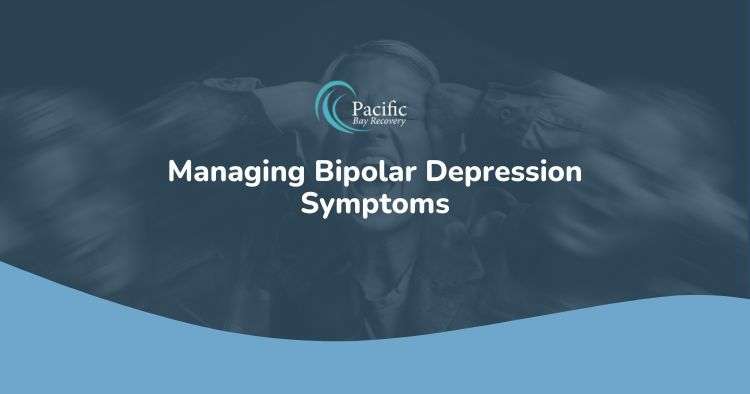Is anyone in your family experiencing bipolar depression symptoms? Wait, what exactly would those look like? Would they be crying all the time? Would they express thoughts of suicide? Would they isolate themselves from friends and family? Well, to be sure of what bipolar depression symptoms look like, our rehabilitation center San Diego dives in to more detail below:
What Are the Signs and Symptoms of Bipolar Disorder?
Bipolar disorder can be characterized by extreme mood swings. They may range from mania (extreme highs) to depression (extreme lows). In the majority of cases, the disorder appears in the early adult or teen years, and according to the National Institute on Mental Illness, impacts 2.6 percent of the adult population in the U.S., or roughly 5.7M people.
Episodes of depression and mania frequently last for several months or weeks.
Depression
During the depressive period, bipolar depression symptoms might involve:
- Suicidal thoughts
- Waking up early
- Difficulty sleeping
- Lack of appetite
- Having hallucinations, being delusional, and illogical or disturbed thinking
- Self-doubt
- Feeling pessimistic about everything
- Feelings of despair and guilt
- Feelings of worthlessness and emptiness
- Loss of interest in daily activities
- Difficulty remembering things and concentrating
- Lack of energy
- Feeling hopeless, irritable, and sad, most of the time
Manic Episodes of Bipolar Disorder
The manic phase of the disorder might involve:
- Saying things or making decisions that are out of character and that other people see as being harmful or risky
- Engaging in things that frequently have tragic consequences – like spending massive sums of money on occasionally unaffordable and expensive items
- Not eating
- Not feel like sleeping
- Being delusional, experiencing hallucinations, and illogical or disturbed thinking
- Being easily agitated or irritated
- Being distracted easily
- Having important plans and feeling full of amazing new ideas
- Feeling self-important
- Feeling full of energy
- Talking extremely quickly
- Feeling overjoyed, elated, or very happy
Types of Bipolar Disorder
There are 4 categories of bipolar disorder, according to the National Alliance on Mental Illness. They are:
Bipolar I
This type is the most common. It involves one or more episodes of mania, without or with occurring depressive episodes. The mania should be serious enough that hospitalization is needed and lasts one week or even longer.
Bipolar II
This type can be characterized by the shifting between the less serious hypomanic and depressive episodes.
Cyclothymic disorder
Cyclothymia, or cyclothymic disorder, includes repetitive mood shifts between hypomania and depression that go on for over two years. The manic and depressive episodes don’t meet the diagnostic criteria for bipolar episodes. There might also be spans of normal mood; however, those times last less than 8 weeks.
Unspecified bipolar disorder
This exists when symptoms don’t fit the other categories, yet still involve unusual manic mood episodes.
Seeking Help After Diagnosis
The majority of people who have bipolar disorder may be treated using different treatment combinations.
They may include one or more of these:
- Lifestyle advise – like doing consistent exercise, planning enjoyable activities that provide a sense of accomplishment, and advice about getting more sleep or improving your diet
- Psychological treatment – like talking therapies, helping you handle depression, and offer advice about how to improve relationships
- Learning to see the signs and triggers of a depressive or manic episode
- Medication that treats the primary symptoms of mania and depression when they occur
- Medication to prevent episodes of depression and mania – they’re referred to as mood stabilizers, and you’ll take them on a daily, long-term basis
The majority of people who have this disorder may obtain most of their care without a hospital stay.
Common Co-Occurring Disorders
A co-occurring disorder is when you have a co-existing substance use disorder and mental illness. While typically utilized to refer to the combination of mental disorders and substance use disorders, the term also can refer to other disorder combinations, like an intellectual disability and a mental disorder.
When a psychiatric disorder and a substance use disorder co-occur, they might differ in severity, and their severity might change over the years. As compared with people with one disorder, the ones who have a combination of disorders might suffer more severe mental health and medical challenges and might also need longer treatment periods.
That’s where we come in! Pacific Bay Recovery’s outpatient rehabilitation center San Diego can help you get through this difficult time. We help with substance use disorders that may have been brought on by a mental illness. Call us today at (619) 350-8220 or fill out our easy inquiry form here to discuss such common co-occurring disorders.


